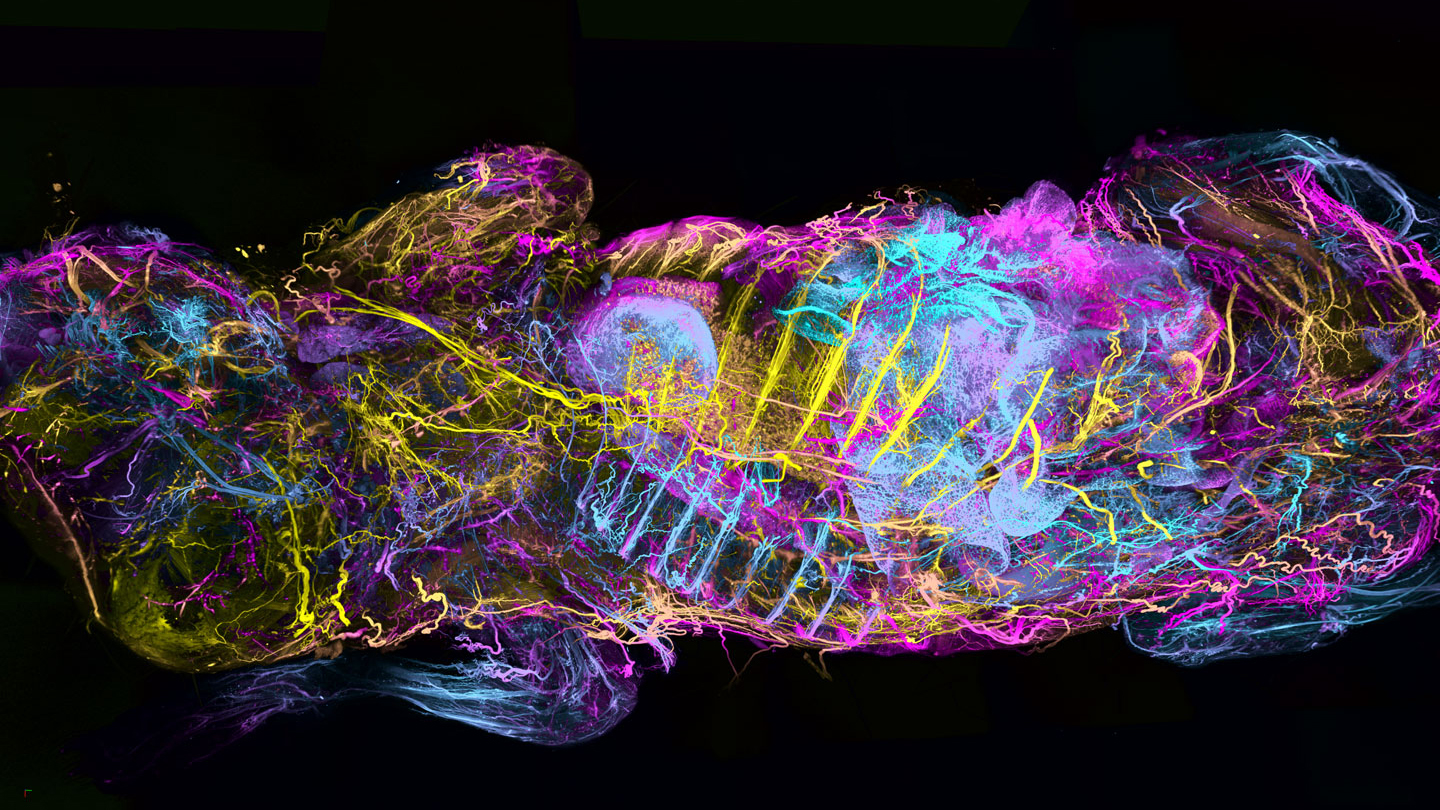
A mouse’s entire nervous system lights up in psychedelic hues. Clumps of immune cells attacking tumors give off a ghostly glow. The vessels that make up the body’s sewer system flare brightly.
See-through mice are nothing new (SN: 8/14/14). But existing techniques to image their insides can be expensive, time-consuming or don’t hit the right target. Now, a study shows that chemically removing cholesterol — an essential component of cell membranes — from dead mice creates spongelike holes in tissues without destroying them. That means tailored antibodies can move through the holes to infiltrate every corner of the body and bind to proteins of interest to make entire anatomical features visible under fluorescent light.
The technique, dubbed wildDISCO, gives scientists an extraordinarily thorough peek under mouse skin to create body-wide anatomical atlases. It’s a bit like Google Maps, says Ali Ertürk, a neuroscientist at Helmholtz Munich. But in place of cars driving around to record every street, antibodies act as streetlamps to illuminate scientific landmarks.
Such maps could help researchers train artificial intelligence programs to simulate bodily processes in mice. The algorithms would aim, for example, to simulate how a drug travels through blood vessels, or predict the path of genetically engineered immune cells for cancer therapy, Ertürk says (SN: 2/2/22). Computational simulations of biology may help researchers move away from doing animal experiments, he says.
2023-07-21 08:00:00
Link from www.sciencenews.org
